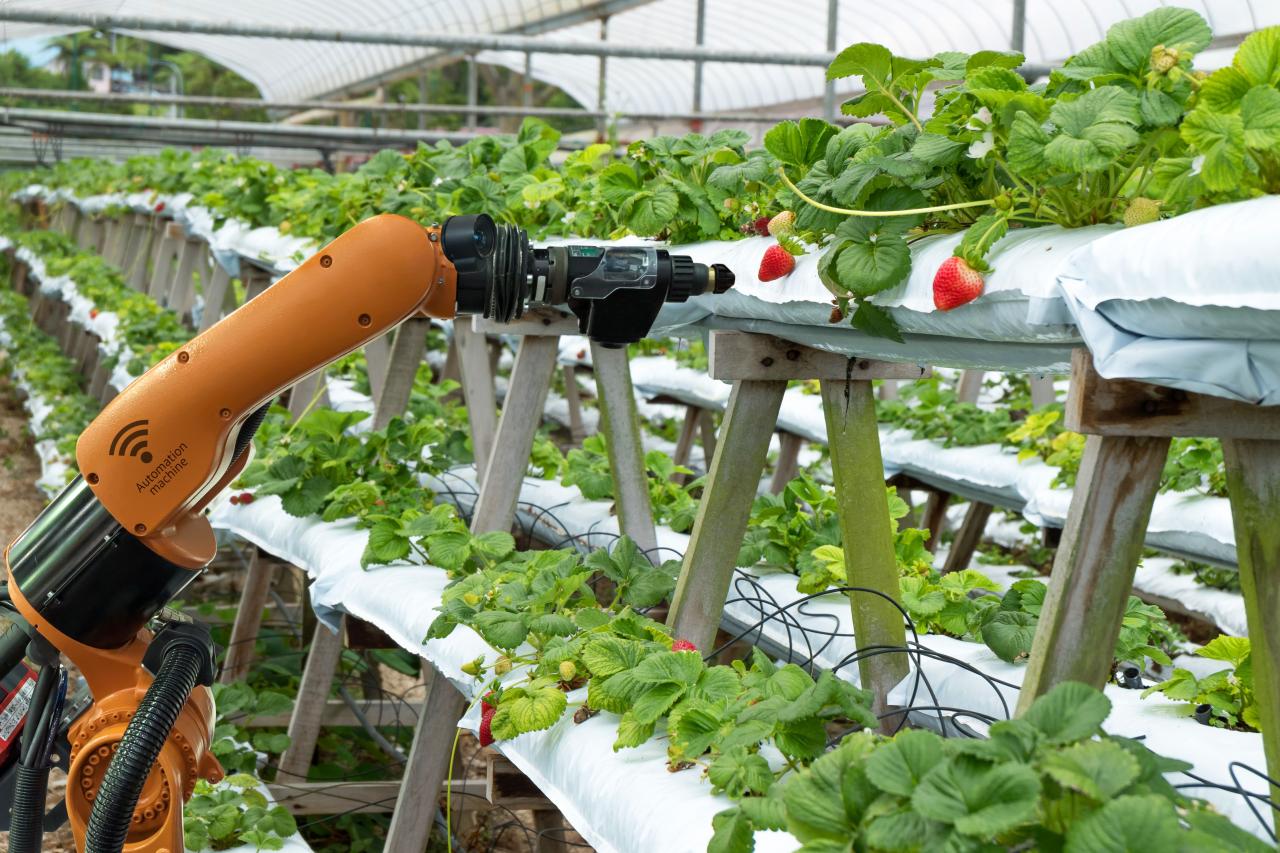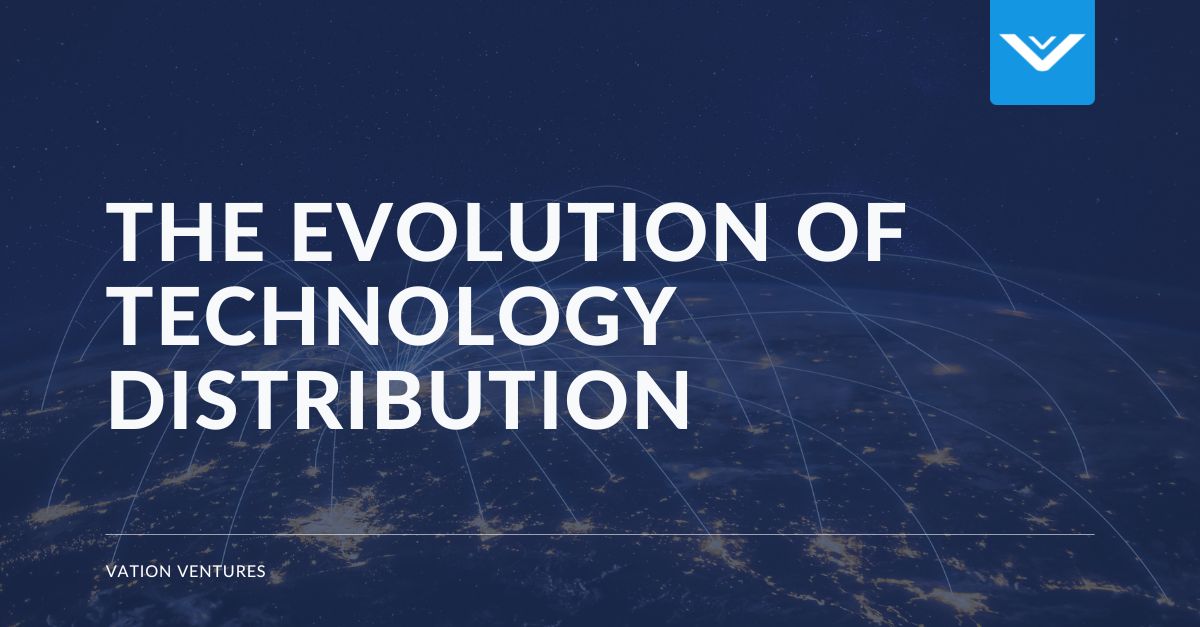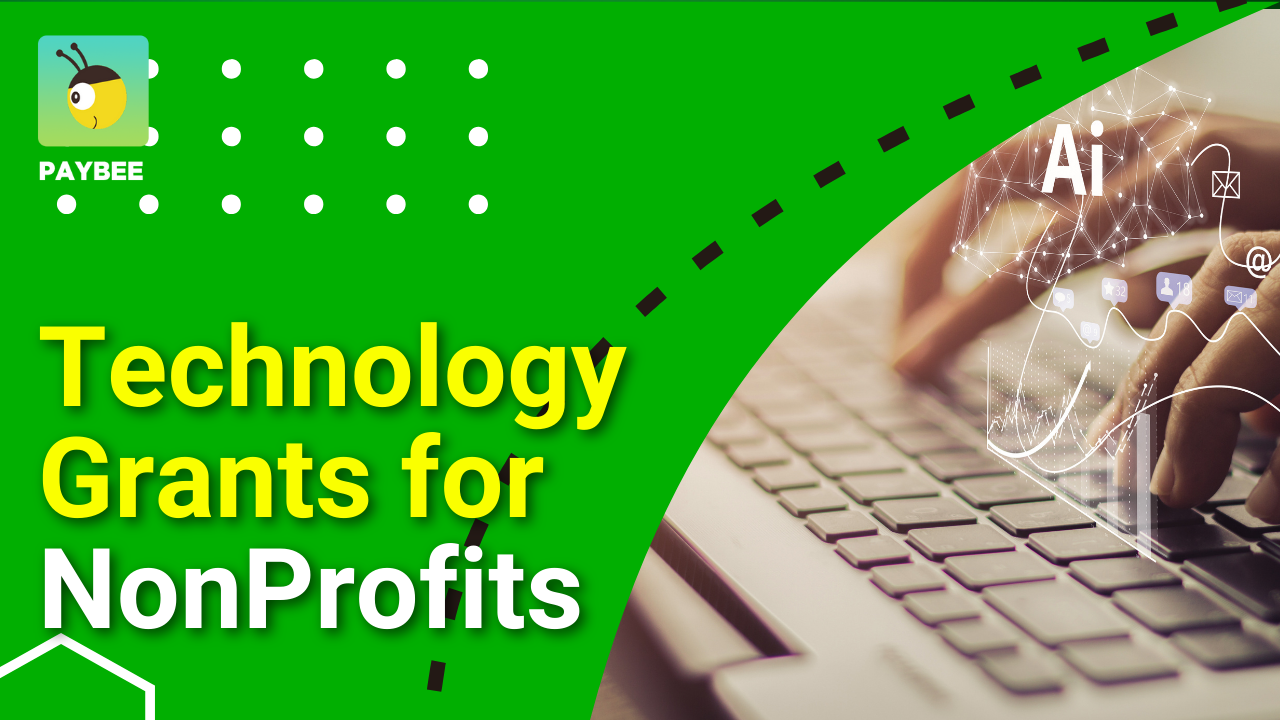Technology in Horticulture: Transforming the Future of Farming
Technology in horticulture has revolutionized the way we grow food, transforming traditional practices into a sophisticated blend of innovation and sustainability. From precision agriculture using drones and sensors to the […]

Technology in horticulture has revolutionized the way we grow food, transforming traditional practices into a sophisticated blend of innovation and sustainability. From precision agriculture using drones and sensors to the rise of robotic systems automating tasks, technology is playing a pivotal role in optimizing crop production, reducing environmental impact, and ensuring food security for a growing global population.
The integration of technology in horticulture has opened doors to unprecedented possibilities, allowing us to better understand and manage plant growth, optimize resource utilization, and develop innovative solutions for challenges like pest control and water scarcity. This convergence of technology and agriculture is not just about increasing yields; it’s about creating a more sustainable and efficient future for the world’s food systems.
Introduction to Technology in Horticulture
Horticulture, the practice of cultivating plants for food, medicine, and aesthetic purposes, has undergone a remarkable transformation driven by technological advancements. From the traditional methods of our ancestors to the sophisticated innovations of the modern era, technology has played a pivotal role in shaping the horticultural landscape.
Evolution of Technology in Horticulture
Technology has been intertwined with horticulture throughout history, with each era witnessing advancements that revolutionized practices. Early civilizations relied on simple tools and traditional knowledge for plant cultivation. Over time, innovations such as the invention of the plow, the development of irrigation systems, and the introduction of crop rotation techniques significantly improved agricultural productivity.
The 20th century marked a turning point with the advent of chemical fertilizers, pesticides, and herbicides, which dramatically increased crop yields and reduced pest damage. However, these advancements also raised concerns about environmental sustainability and human health.
Impact of Technology on Horticultural Practices
Technology has transformed various aspects of horticulture, leading to increased efficiency, improved yields, and enhanced sustainability.
Crop Production
Technology has significantly enhanced crop production by optimizing growth conditions and maximizing yields.
- Precision agriculture: This technology uses sensors, data analytics, and GPS systems to monitor and manage crops with pinpoint accuracy. By analyzing data on soil conditions, plant health, and weather patterns, farmers can optimize fertilizer and water application, reducing waste and improving resource efficiency.
- Controlled environment agriculture (CEA): CEA techniques, such as greenhouses and vertical farms, provide a controlled environment for plant growth, minimizing the impact of external factors like weather and pests. This allows for year-round production, increased yields, and reduced reliance on pesticides.
- Plant breeding: Advances in biotechnology, such as genetic modification and marker-assisted selection, have accelerated the development of crop varieties with desirable traits like disease resistance, higher yields, and improved nutritional content.
Pest Control
Technology has provided innovative solutions for pest control, reducing reliance on harmful chemical pesticides and promoting sustainable practices.
- Biopesticides: These naturally derived pesticides offer a more environmentally friendly alternative to synthetic chemicals. Biopesticides are derived from bacteria, fungi, or plants and target specific pests without harming beneficial insects or pollinators.
- Integrated pest management (IPM): IPM combines various techniques, including cultural practices, biological control, and minimal pesticide use, to manage pests effectively. This approach aims to prevent pest outbreaks and minimize environmental impact.
- Precision pest control: This technology uses sensors and data analytics to identify and target specific pests, reducing the need for broad-spectrum pesticides. This approach minimizes the risk of harming beneficial insects and pollinators while effectively controlling pests.
Irrigation
Technology has revolutionized irrigation systems, improving water efficiency and reducing water waste.
- Drip irrigation: This method delivers water directly to plant roots, minimizing evaporation and runoff. Drip irrigation systems use a network of pipes and emitters to deliver water slowly and precisely, reducing water waste and promoting efficient water use.
- Smart irrigation systems: These systems use sensors and data analytics to monitor soil moisture and weather conditions, automatically adjusting irrigation schedules to meet the specific needs of plants. This technology ensures optimal water application, minimizing waste and promoting water conservation.
- Water harvesting: Techniques like rainwater harvesting and graywater reuse allow for efficient water management in horticulture. By collecting and reusing water resources, farmers can reduce their reliance on external water sources and promote sustainable water use.
Benefits and Challenges of Integrating Technology in Horticulture
Technology offers numerous benefits to horticultural practices, but it also presents certain challenges.
Benefits
- Increased productivity: Technological advancements have led to increased crop yields, reduced labor costs, and improved resource efficiency.
- Enhanced sustainability: Technology has facilitated the development of sustainable practices, such as precision agriculture, biopesticides, and efficient irrigation systems, reducing environmental impact and promoting resource conservation.
- Improved quality: Technology has enabled the production of high-quality crops with consistent characteristics, meeting consumer demands for fresh, nutritious, and safe produce.
- Enhanced decision-making: Data analytics and remote sensing technologies provide valuable insights into crop health, pest activity, and environmental conditions, empowering farmers to make informed decisions and optimize production.
Challenges
- Cost: Implementing advanced technologies can be expensive, requiring significant investments in equipment, software, and training.
- Digital divide: Access to technology and internet connectivity can be limited in some regions, creating a digital divide and hindering the adoption of innovative practices.
- Data privacy: The collection and use of data in precision agriculture raise concerns about data privacy and security. Ensuring responsible data management and protecting sensitive information is crucial.
- Skills gap: Implementing new technologies requires specialized skills and knowledge, creating a need for training programs and educational initiatives to bridge the skills gap.
Precision Agriculture and Data Analytics

Precision agriculture leverages technology to optimize agricultural practices, leading to increased efficiency, improved yields, and reduced environmental impact. It involves collecting and analyzing data from various sources to gain insights into crop health, soil conditions, and environmental factors, enabling farmers to make informed decisions about resource allocation and management.
Sensors, Drones, and Remote Sensing in Data Collection, Technology in horticulture
Sensors play a crucial role in gathering data for precision agriculture, providing real-time information about various parameters.
- Soil sensors measure soil moisture, temperature, nutrient levels, and pH, providing insights into the health and fertility of the soil.
- Weather stations monitor temperature, humidity, rainfall, wind speed, and solar radiation, enabling farmers to track weather patterns and predict potential risks.
- Plant sensors monitor plant growth, stress levels, and nutrient uptake, providing valuable data for optimizing irrigation and fertilization.
Drones equipped with multispectral cameras and sensors are used for aerial surveys, capturing high-resolution images and data that can be analyzed to identify areas of crop stress, disease, and nutrient deficiencies. Remote sensing techniques, such as satellite imagery, provide large-scale data on crop health, vegetation indices, and land use patterns, enabling farmers to monitor crop growth and identify potential issues over vast areas.
Data Analytics for Optimization and Improvement
Data collected from various sources is analyzed using sophisticated algorithms and software to identify patterns, trends, and insights.
- Yield prediction models use historical data and real-time information to forecast crop yields, enabling farmers to plan for harvesting and resource allocation.
- Irrigation optimization algorithms analyze soil moisture data and weather forecasts to determine the optimal amount of water needed for each crop, reducing water usage and preventing over-irrigation.
- Nutrient management systems analyze soil and plant data to determine the specific nutrient requirements of crops, enabling farmers to apply fertilizers efficiently and minimize environmental impact.
Data analytics also helps identify pest and disease outbreaks early, enabling timely interventions and reducing crop losses.
Precision Agriculture in Strawberry Production
Imagine a strawberry farm where sensors monitor soil moisture, temperature, and nutrient levels in real-time. Drones equipped with multispectral cameras capture images of the strawberry plants, identifying areas of stress and disease. Data analytics algorithms process this information to optimize irrigation and fertilization, ensuring that each plant receives the precise amount of water and nutrients it needs.
- The system can identify individual plants that are struggling and provide targeted interventions, such as additional irrigation or fertilization.
- It can also predict the optimal time for harvesting, ensuring that the strawberries are picked at their peak ripeness and quality.
This data-driven approach can significantly increase strawberry yields, reduce water and fertilizer usage, and minimize environmental impact.
Automation and Robotics in Horticulture
The integration of automation and robotics in horticulture has revolutionized traditional farming practices, offering significant benefits in terms of efficiency, precision, and sustainability. These technological advancements have enabled farmers to optimize resource utilization, minimize labor costs, and enhance crop yields.
Types of Horticultural Robots and their Applications
Horticultural robots are designed to perform various tasks throughout the growing cycle, from planting and harvesting to weeding and pest control. These robots are equipped with advanced sensors, actuators, and software algorithms to navigate complex environments and execute precise actions.
- Planting Robots: These robots are used for planting seeds or seedlings in a precise and efficient manner. They can accurately place seeds at predetermined depths and spacing, ensuring optimal germination and growth.
- Harvesting Robots: Harvesting robots are designed to selectively pick ripe fruits, vegetables, or flowers from the field. These robots use advanced vision systems to identify ripe produce and manipulate grippers to gently pick them.
- Weeding Robots: Weeding robots use a combination of sensors, cameras, and mechanical tools to identify and remove weeds from crop fields. These robots can differentiate between crops and weeds based on their physical characteristics, reducing the need for manual weeding.
- Pest Control Robots: Pest control robots can be used to monitor crops for pests and diseases and apply targeted treatments. These robots use sensors to detect pest infestations and can apply pesticides or other control measures in a precise and efficient manner.
Advantages of Automation in Horticulture
Automation in horticulture offers numerous advantages, including:
- Increased Efficiency: Robots can work continuously without breaks, significantly increasing the speed and efficiency of tasks like planting, harvesting, and weeding. This leads to higher productivity and reduced labor costs.
- Improved Precision: Robots can perform tasks with a high degree of precision, ensuring uniform planting depths, consistent harvesting times, and accurate pesticide applications. This results in improved crop quality and yields.
- Reduced Labor Costs: Automation can reduce the reliance on manual labor, which can be scarce and expensive in some regions. Robots can perform tasks that are physically demanding or require specialized skills, freeing up human workers for other tasks.
- Enhanced Sustainability: Automation can help minimize the use of pesticides and fertilizers by enabling precise applications and reducing the need for manual weeding. This contributes to environmental sustainability and reduced chemical runoff.
Limitations of Automation in Horticulture
While automation offers significant benefits, there are also some limitations to consider:
- High Initial Investment: The cost of purchasing and implementing robotic systems can be substantial, which may be a barrier for small-scale farmers.
- Crop Suitability: Not all crops are suitable for automation. Crops with delicate structures or irregular growth patterns may be challenging to harvest or weed using robots.
- Technical Expertise: Operating and maintaining robotic systems requires technical expertise, which may not be readily available in all regions.
- Environmental Factors: Robots may be affected by environmental factors such as weather conditions, soil variations, and crop diseases, which can impact their performance.
Wrap-Up: Technology In Horticulture
As we look toward the future, the intersection of technology and horticulture promises even more exciting advancements. From the use of artificial intelligence to analyze vast datasets and predict plant behavior to the emergence of vertical farming systems that maximize space and resource efficiency, the potential for technological innovation in this field is vast. By embracing these advancements, we can create a more sustainable, productive, and resilient agricultural landscape, ensuring food security for generations to come.
Technology is revolutionizing the way we grow food, and companies like ccp technologies ltd are at the forefront of this revolution. They specialize in providing innovative solutions for horticulture, from automated irrigation systems to precision fertilization technologies, enabling growers to optimize their yields and resource usage.




